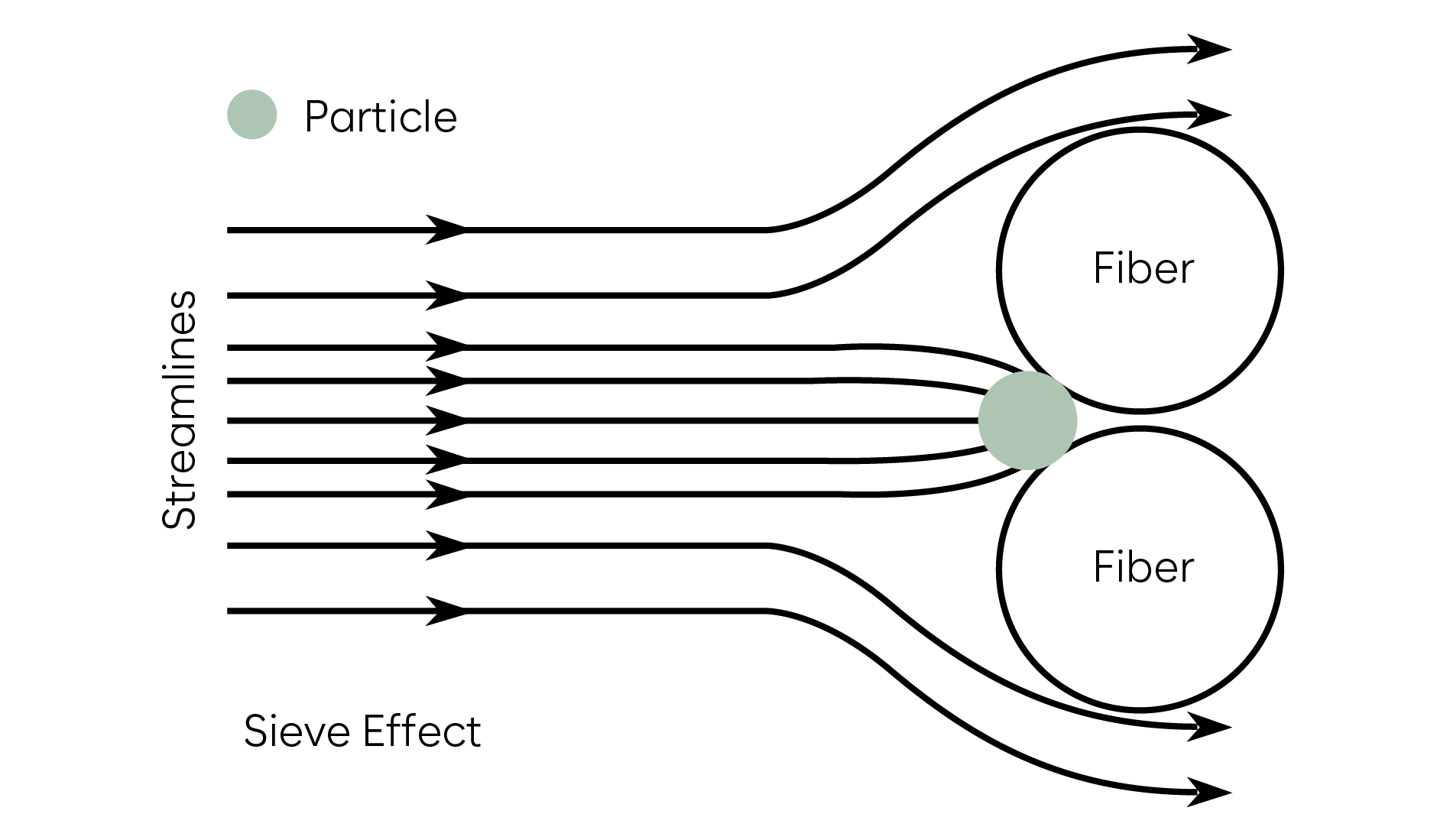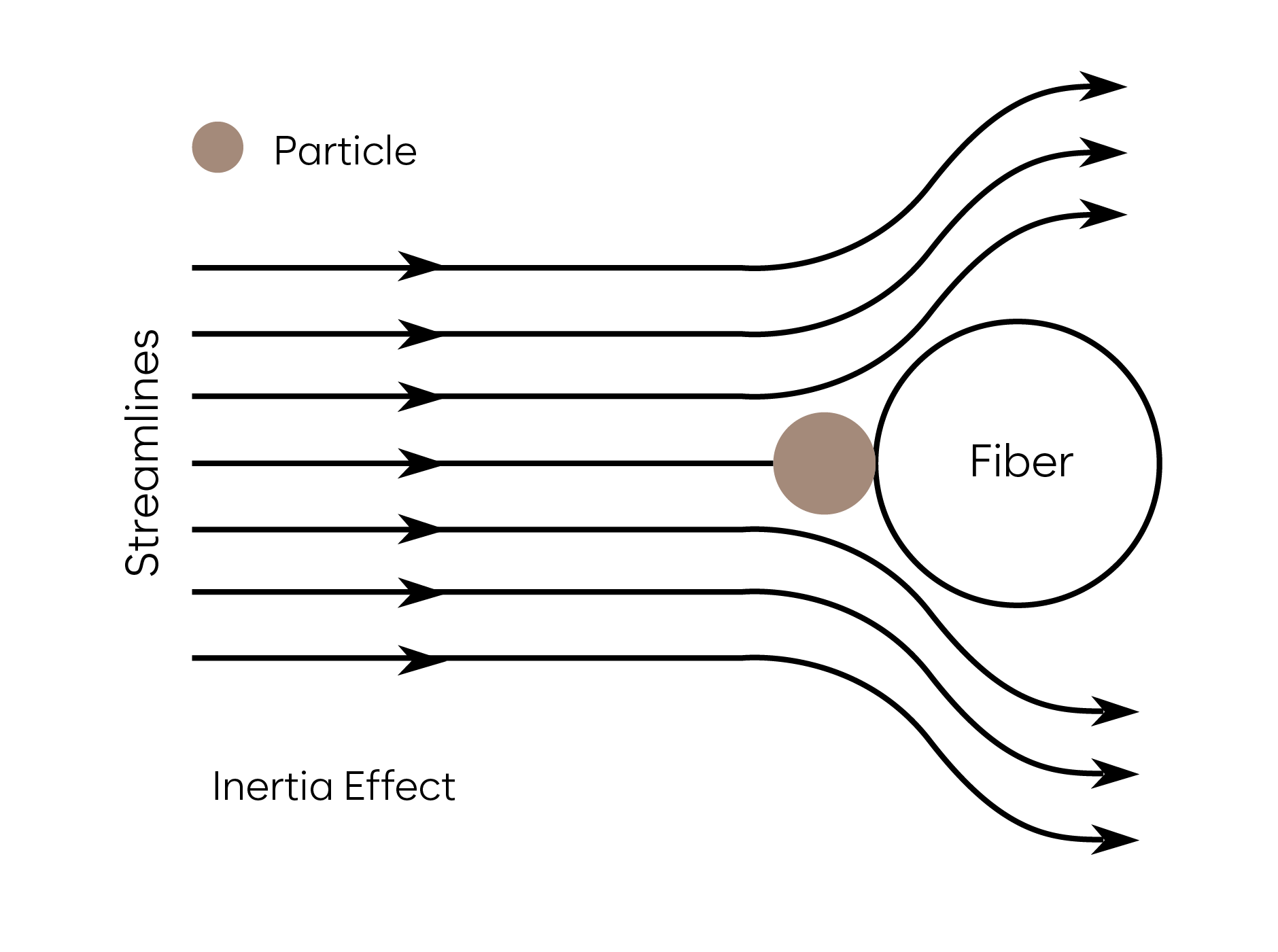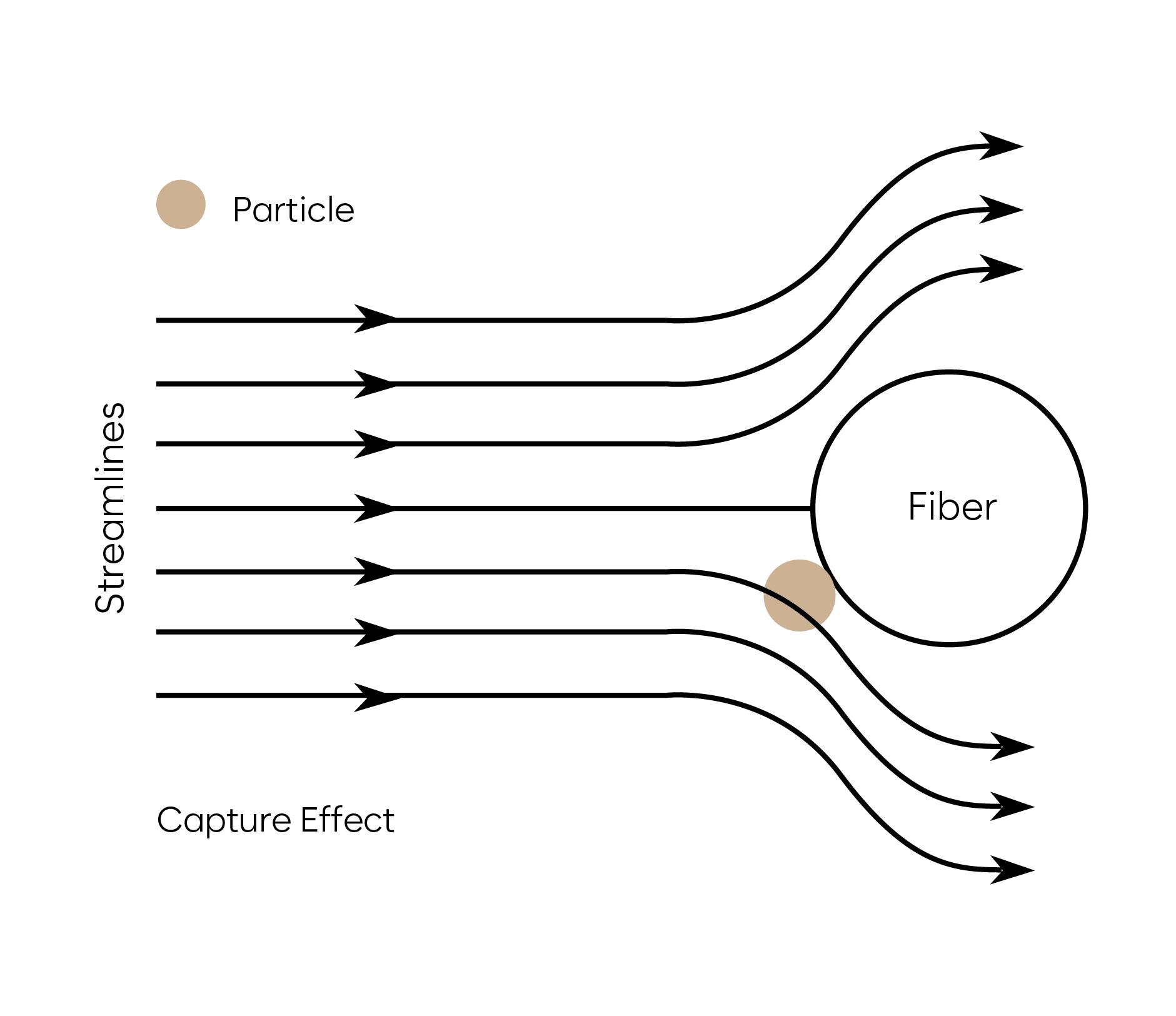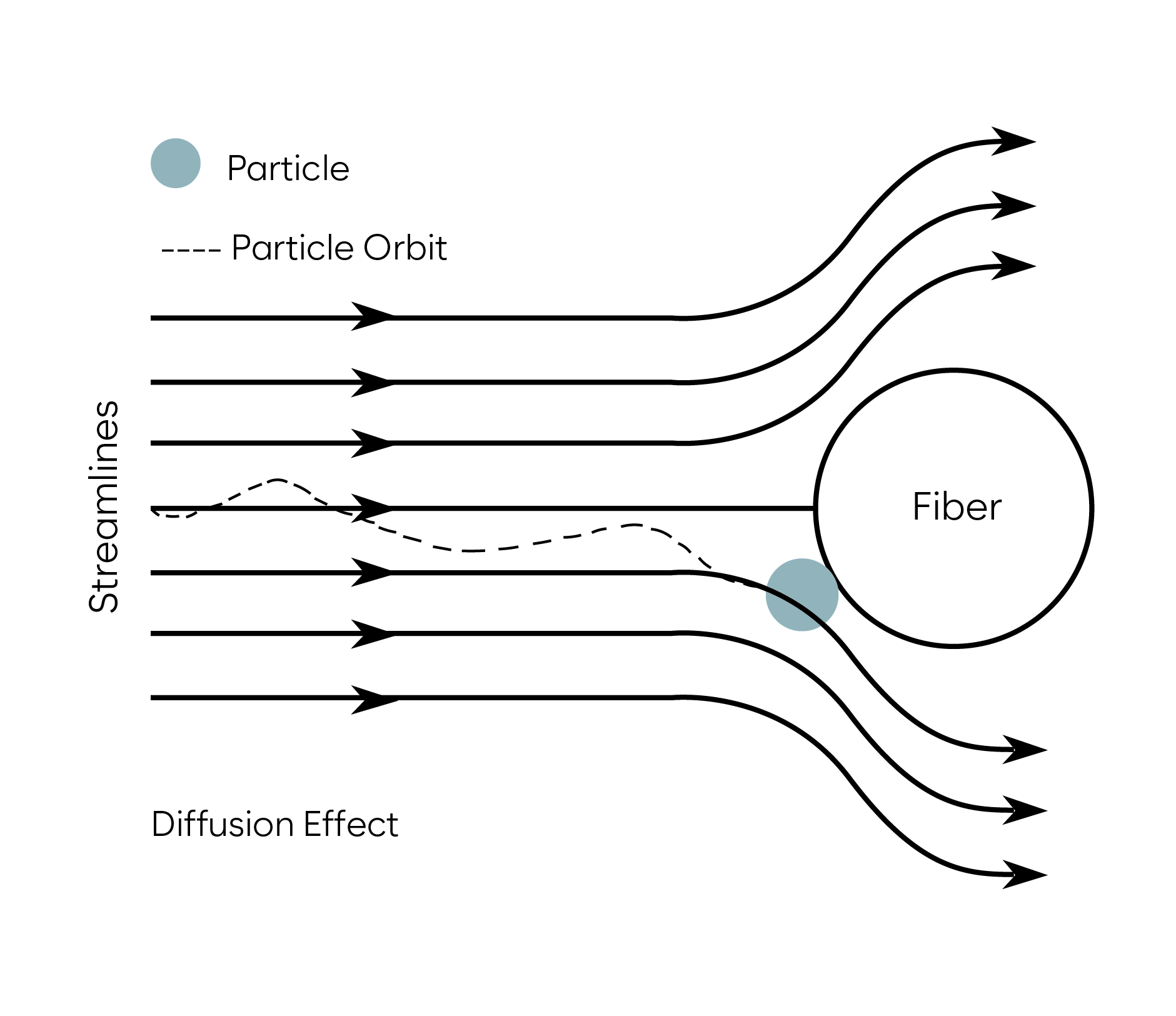Sieve Effect:
It is the simplest filtration mechanism. It is the process of capturing particles larger than the gap between the two fiber threads used as the filter element.

Inertia Effect:
Particles, when encountering a filter fiber in their path, want to continue their journey without altering their parallel orientation. However, due to their inertia, they fail to do so and instead collide with the fiber and adhere to its surface.

Capture Effect:
If the particle size is very small, the particle can follow an orbit around the fiber thread along with the air. However, if this orbit passes closer to the fiber than half the particle radius, the particle is captured by the fiber and adheres to it.

Diffusion Effect:
When the particle size is smaller than 1 µm, gas molecules colliding with the particles can cause them to move erratically. As a result of this behavior, particles colliding with the filter fiber can adhere to the filter.

Electrostatic Effect:
Between charged particles and filter fibers, particles adhere to the fibers due to the principle of opposite charges attracting each other.




